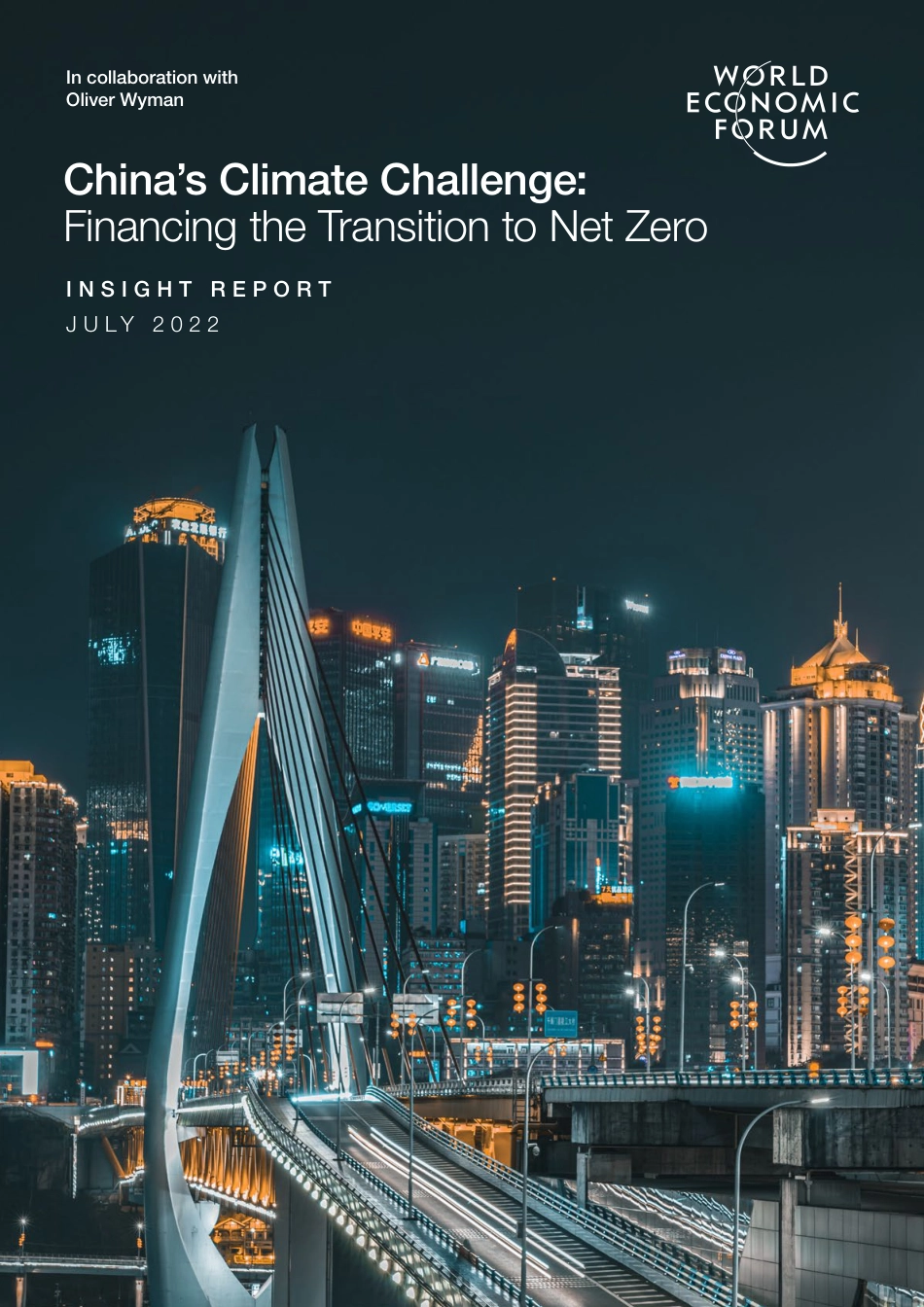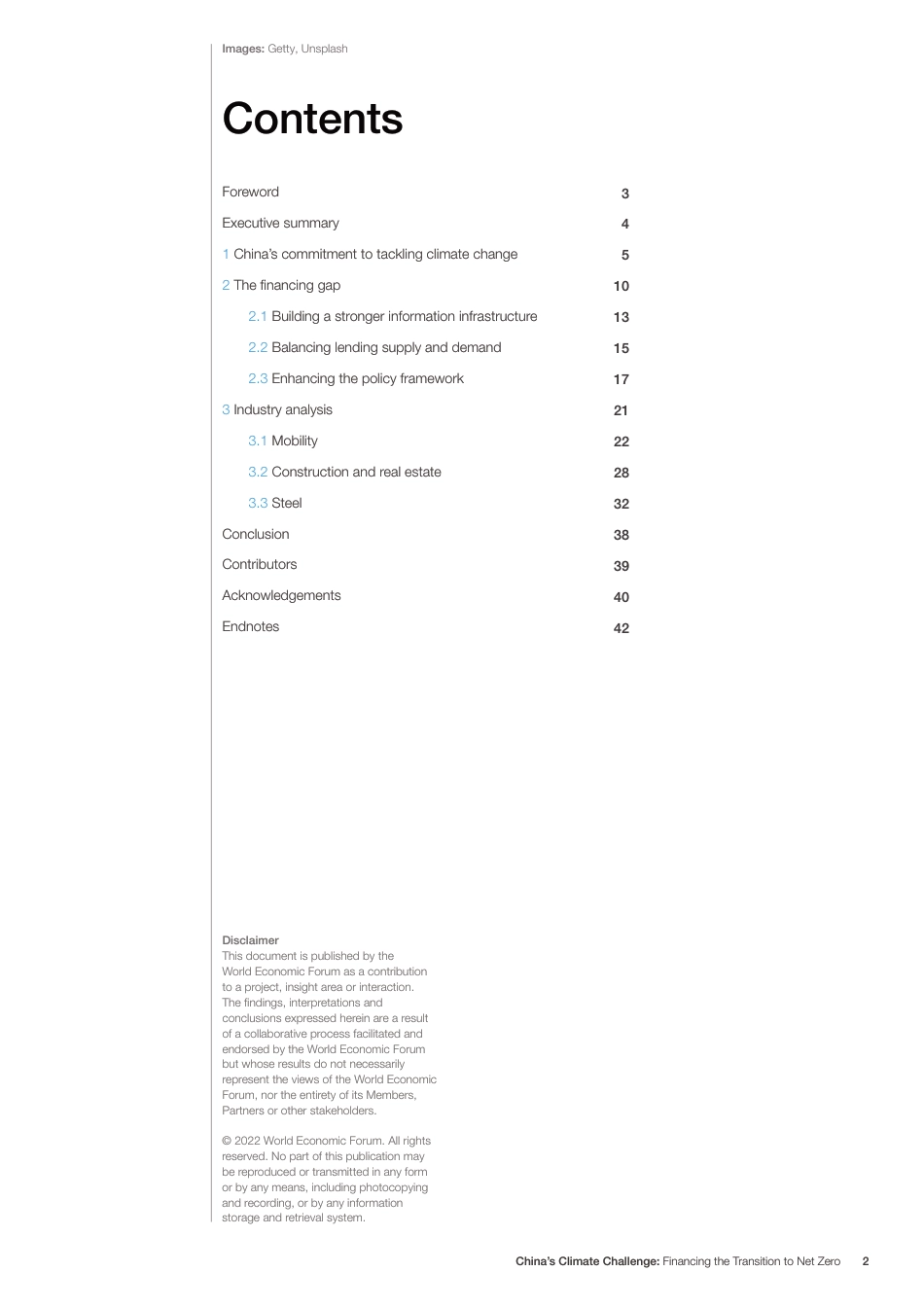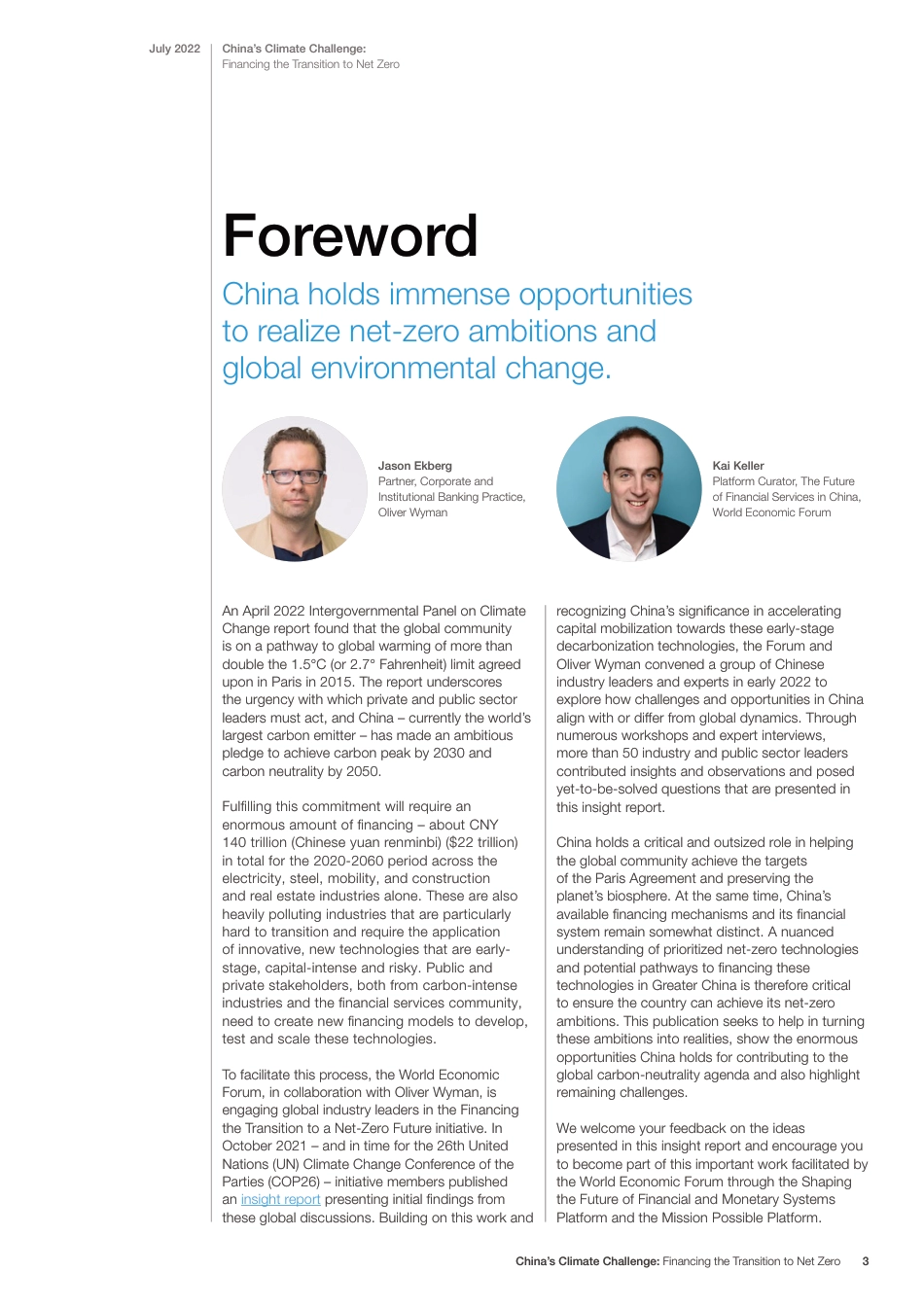China’s Climate Challenge: Financing the Transition to Net Zero I N S I G H T R E P O R TJ U L Y 2 0 2 2In collaboration with Oliver WymanContentsForewordExecutive summary1 China’s commitment to tackling climate change2 The financing gap2.1 Building a stronger information infrastructure2.2 Balancing lending supply and demand2.3 Enhancing the policy framework3 Industry analysis3.1 Mobility3.2 Construction and real estate3.3 SteelConclusionContributorsAcknowledgementsEndnotes345101315172122283238394042Images: Getty, Unsplash© 2022 World Economic Forum. All rights reserved. No part of this publication may be reproduced or transmitted in any form or by any means, including photocopying and recording, or by any information storage and retrieval system.Disclaimer This document is published by the World Economic Forum as a contribution to a project, insight area or interaction. The findings, interpretations and conclusions expressed herein are a result of a collaborative process facilitated and endorsed by the World Economic Forum but whose results do not necessarily represent the views of the World Economic Forum, nor the entirety of its Members, Partners or other stakeholders.China’s Climate Challenge: Financing the Transition to Net Zero2An April 2022 Intergovernmental Panel on Climate Change report found that the global community is on a pathway to global warming of more than double the 1.5°C (or 2.7° Fahrenheit) limit agreed upon in Paris in 2015. The report underscores the urgency with which private and public sector leaders must act, and China – currently the world’s largest carbon emitter – has made an ambitious pledge to achieve carbon peak by 2030 and carbon neutrality by 2050.Fulfilling this commitment...



